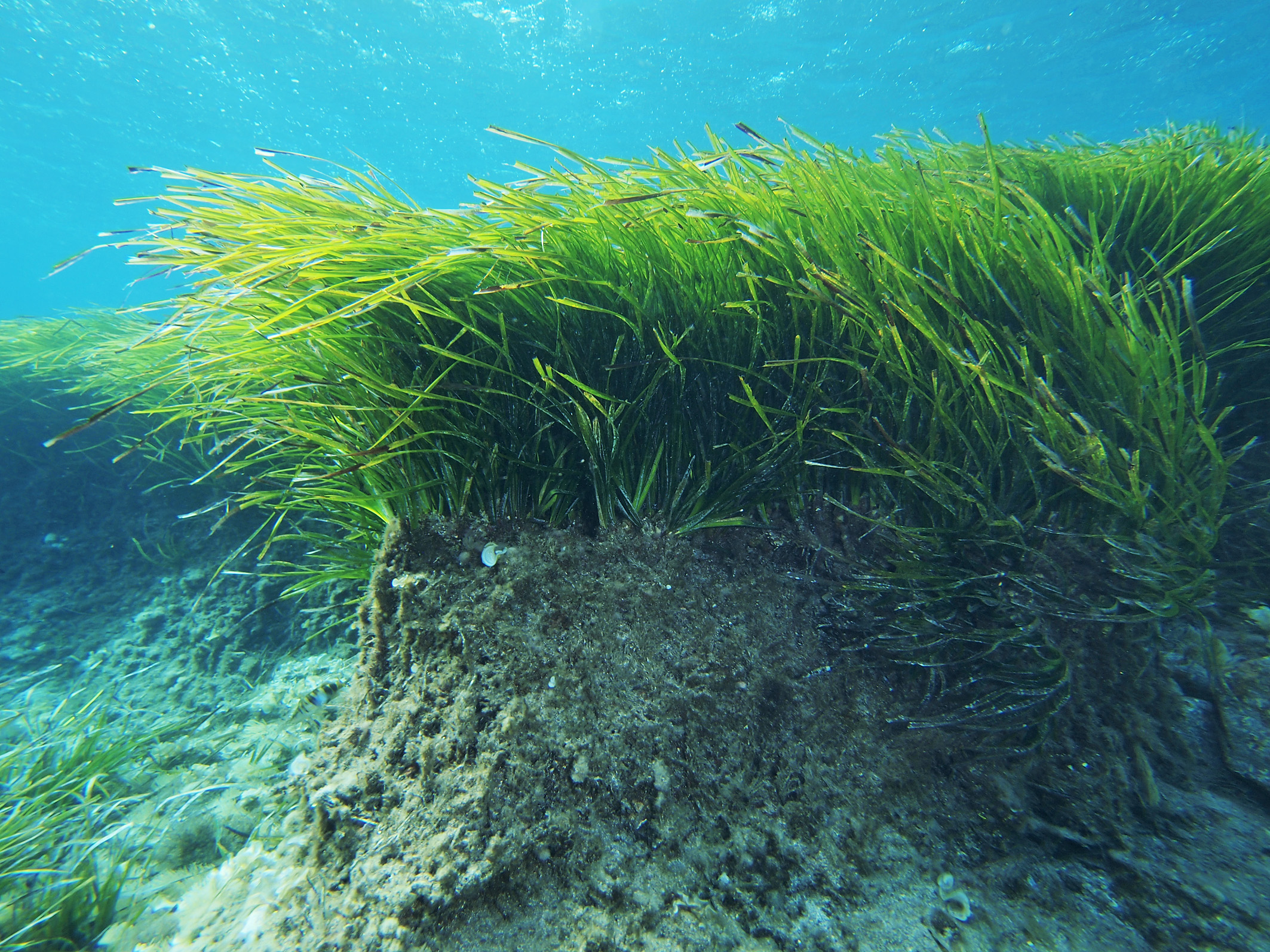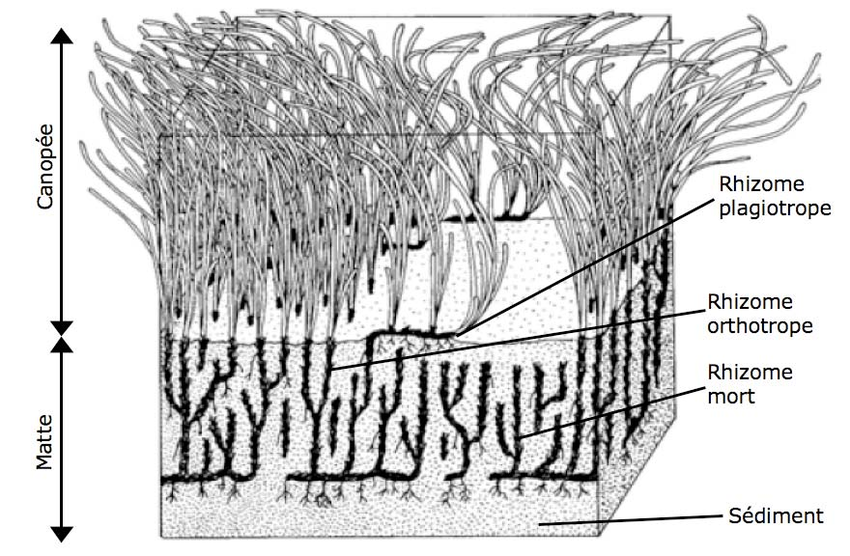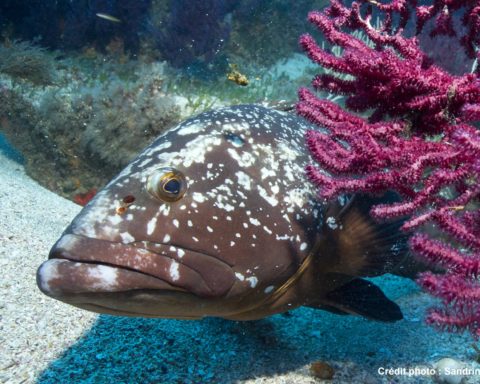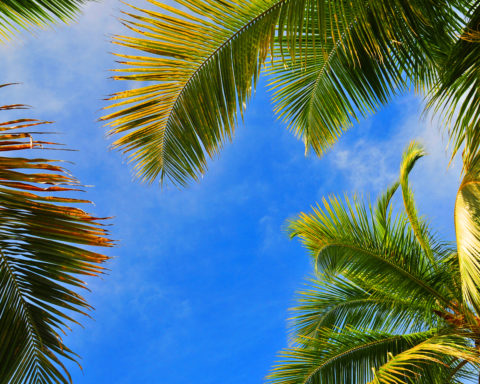Being ocean lovers like us, we cannot ignore it. Green in the water, dried up on our beaches, giving us an unpleasant sensation on our legs when we get out from our swim, Posidonia is the lung of the Earth!
Often named by default “Algae”, it remains nevertheless a marine plant. This invaluable and irreplaceable green wonder can only be found here in the Mediterranean.

Its evolution over time
The plant’s history is interesting: as many already know, all terrestrial plants emerged from their aquatic habitat, with Posidonia being one of these species. After millions of years adapting to life outside of the water, this flowering plant finally adopted a terrestrial coastal habitat, only to return to its aquatic life, while still keeping its terrestrial characteristics! Consequently, this makes it one of the only flowering plants in the sea (what we call a “marine angiosperm”), along with being the only representative of its family.
It’s just a marine plant, why make such a fuss?
Posidonia (or Posidonia Oceanica being its scientific name), currently lives between the surface level and 40 meters deep, and has a key role in the production of oxygen, CO2 absorption, biodiversity enrichment, erosion control, sediment particle deposition, wave damping, reducing ocean acidification and many more, thus maintaining our beaches and essentially contributing to the fight against climate change.
To go into more details, in addition to its ecosystem, Posidonia absorbs a phenomenal amount of CO2 through photosynthesis, at approximately 830kg per km2 per year in total, equating to three times more than tropical and temperate forests of the same area. This makes it an essential species in the efforts against climate change and ocean acidification!
Another benefit of its remarkable photosynthesis is the production of oxygen. Posidonia has the capacity to produce an average of 14 liters of oxygen per meter squared daily, meaning approximately 250,000,000,000 liters annually! This distinction makes it the largest producer of oxygen in the world and claiming the title of the “veritable lung of the earth”.
Do you understand now that this plant is more than its role in the ecosystem, it is unique, fragile and essential for the survival of our planet and for us!
How to recognize Posidonia
This green meadow, “herbarium”, undulates with the currents with its vertical and horizontal stems called “rhizomes”, from which large leaves emerge. These rhizomes grow very slowly growing approximately between 5 to 10cm per year. The dense canopy allows many species of young fish, crustaceans and cephalopods to protect themselves from predators until they reach their adult size. The herbarium acts as a nursery, which accordingly makes Posidonia the most biodiverse marine ecosystem in the world!

As the rhizomes and leaves die off each fall, as a terrestrial feature, they tend to drift towards beaches to stick on our legs or develop a “dead mat” as they surface the beach. The leaves on the coasts can serve as a refuge and new ecosystem for many species of crustaceans and coastal insects, while this “dead mat” on the beach allows a new purpose for the Posidonia meadow in the rising sun. Nothing is lost in its life cycle!
This pile of leaves called the “Posidonia Banquette” also stabilizes the sand and promotes the creation of dunes, additionally limiting the erosion of our coasts.
Indeed, from start to finish of life cycle, each moment shows that this plant is magical in its crucial role in preserving biodiversity, our coasts and for us. This is the very moment you ask yourself “but why are municipalities removing Posidonia from the beaches?” The answer to this is written in the beginning of this article, as the “unpleasant sensation on our legs when we get out from our swim”. For many, a dried-up pile of leaves is not an attractive view to tourists.
Despite strict regulations, Posidonia Oceanica is disappearing
The causes of its decreasing population are mainly caused by pollution, human construction along the coasts, fishing activities and boat anchors which mow tens of meters squared at each anchor. The latest research presents the appalling reality that 34% of the surface of Posidonia has disappeared in the past 50 years. Today, Posidonia Oceanica is protected at a European level and global level. It has been declared a “site of community importance” by a European Union directive, also included in the European Union Habitats and the Bern Convention, and is the subject of conservation actions like the RAMSAR Convention and numerous studies around the globe. Needless to say, if you are caught destroying Posidonia, you are taking a large risk!
Nevertheless, recent studies indicate that Posidonia is vulnerable to disappear within the next century, leaving a deeply pessimistic future for our dear Mediterranean.
How to act!
There exists simple actions that are accessible to everyone in order to conserve this exceptional ecosystem: become a sentinel of the sea by sharing your observations, by participating in awareness-raising actions, by learning new anchoring techniques, by being careful…
And do not hesitate to take a magnifying glass and observe all the microfauna present in the Posidonia benches!
More information: Gis Posidonie
Autor : Julien Richard – Marine Biologist









